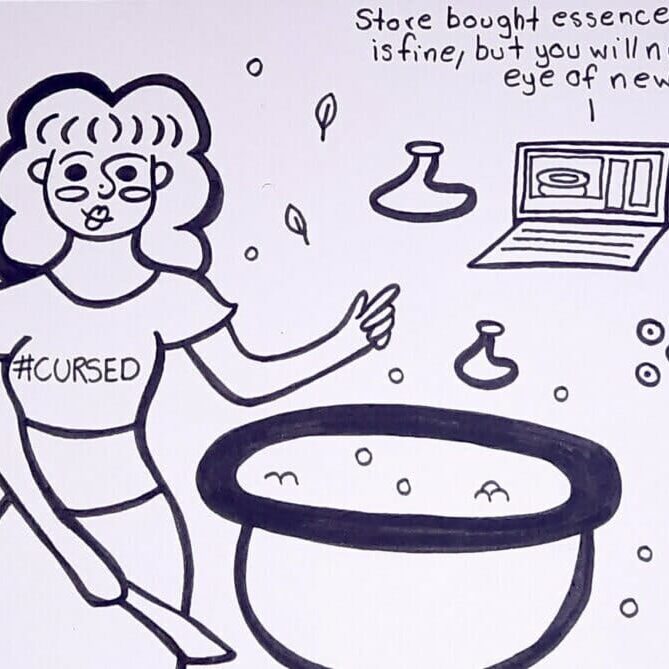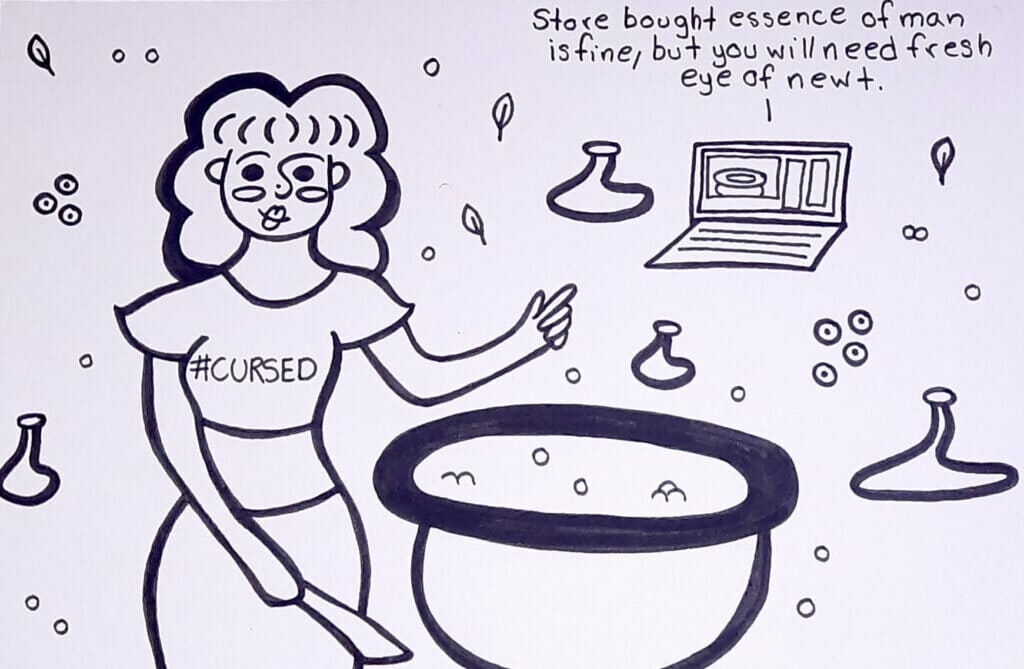
In the Medieval Ages, witches were perceived as nothing to sneeze at. They were so feared that numerous women were killed when believed to be witches.
Now, some modern witches are shaking off the stigma and using witchcraft to destress and find peace.
According to The Salem Witch Museum in Salem, Mass., the peak of the witch hunts in Europe led to the deaths of roughly 50,000 people. In modern North America, this fear has all but disappeared.
Now, the witch’s cackle is a signature Halloween sound byte accompanying cheap decorations with warty, green skin and rotten teeth. Is there a place for witches outside of this festive holiday?
Witchcraft is therapeutic for many. Books such as Witchcraft Therapy by Mandi Em and Witchcraft for Emotional Wisdom by Paige Vanderbeck discuss the use of witchcraft as something positive mentally and spiritually, rather than for malice like the Salem-era witches were thought to have engaged in.
Some people view witchcraft as a religious experience and search for a sense of community to redefine their spirituality — people like E.M. Kenny.
After-school activities for witches
Kenny, a residence don at the University of King’s College, helped lead a “Witchy Wednesday” event in a residence common room on Oct. 12. The event included tarot reading, wand making, spell jar creation and snacks.
Kenny felt the event was a good break for students feeling overwhelmed with upcoming assignment deadlines and midterms.
The spell jar was designed to create academic success for the person assembling it. It was easy to construct, consisting of salt, sunflower seeds, nutmeg, and other ingredients placed in a little pot. The jar was sealed using candle wax and meant to be kept on the desk of its maker, as a reminder of the success to come.
“It’s the idea that there’s something I can do. Because, you know, there’s a lot of things in the world you have no control over,” Kenny says.

Shop local
For locals interested in witches, there are shops around Halifax catering to modern witchcraft.
Neighbourhood Witch on Queen Street is a great place to start. The store is filled with stones, incense, skull-shaped candles and tarot cards. In addition to a friendly yet spooky atmosphere, the store also sells various good luck charms, such as Nazar Boncuk charms from Turkey and numerous crystals.
For the more niche witch, the store also carries a collection of cloaks, hats and even stuffed toy bats and little demons. Books on Satanism and devil worship can also be found in the farthest back area of the shop.
Are these links between witches and the devil well-founded?
Herbal medicine and the birth of witchcraft
According to History.com, the origin of witchcraft appears to be a misunderstanding. It’s believed many of the women accused of practicing magic or summoning spirits were practitioners of herbal medicine, using plants to create “potions.”
The use of herbs as medicine is still an active practice in the modern world of witchcraft. Many books at Neighborhood Witch provide recipes to treat a variety of ailments naturally.
Through herbal medicine and holistic healing, the practice of aromatherapy, some forms of witchcraft might even serve as a mood booster. The pleasant smell of incense and oils, for example, has been studied for its potential ability to improve productivity and serenity.
One study, published in the Journal of Affective Disorders last year, found aromatherapy significantly improved insomnia symptoms.
Modern witchcraft establishes community and control for those needing a non-consequential spirituality. It allows for self-reflection and healing, consisting of small steps and the manifestation of good luck and fortune for the future. Is it evil? Probably not. And it might help you relax during stressful situations.






